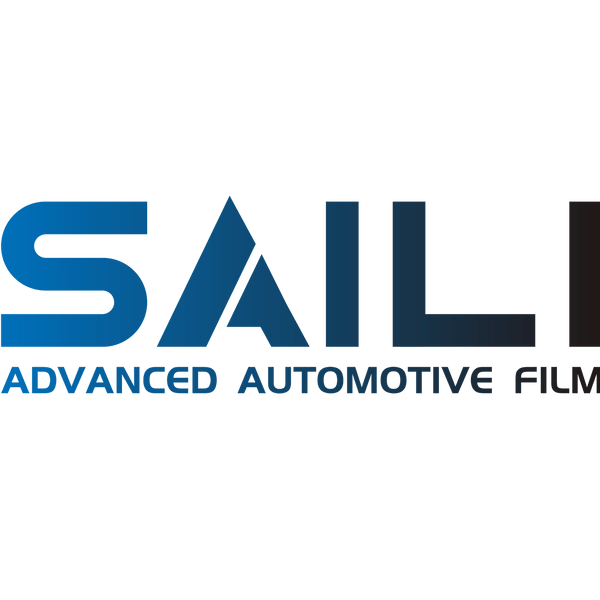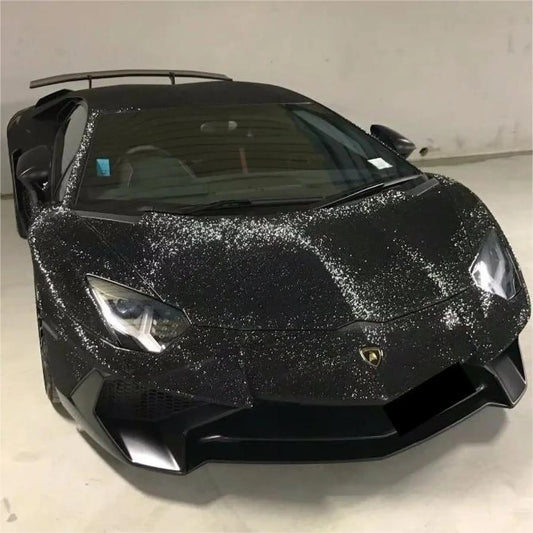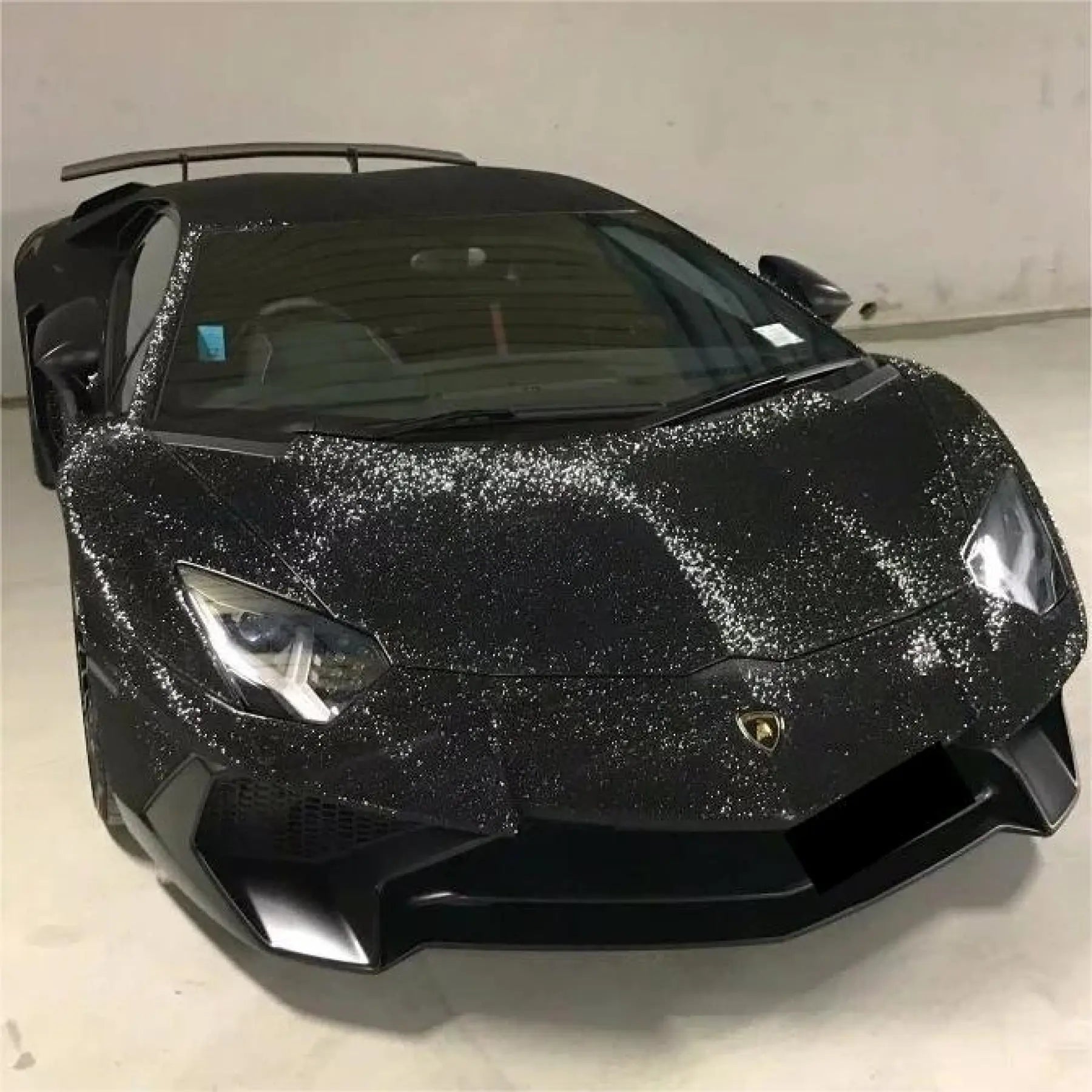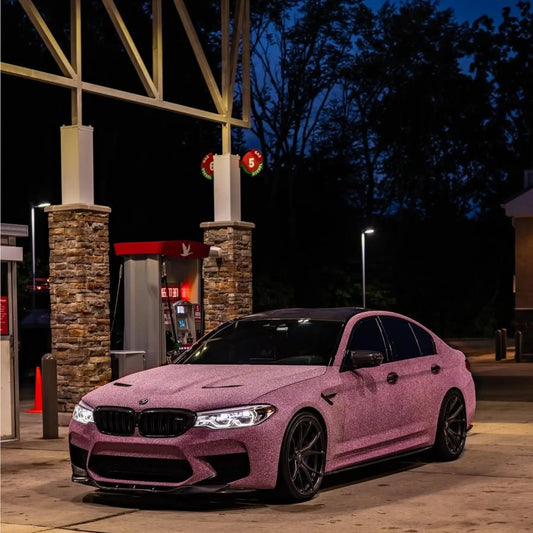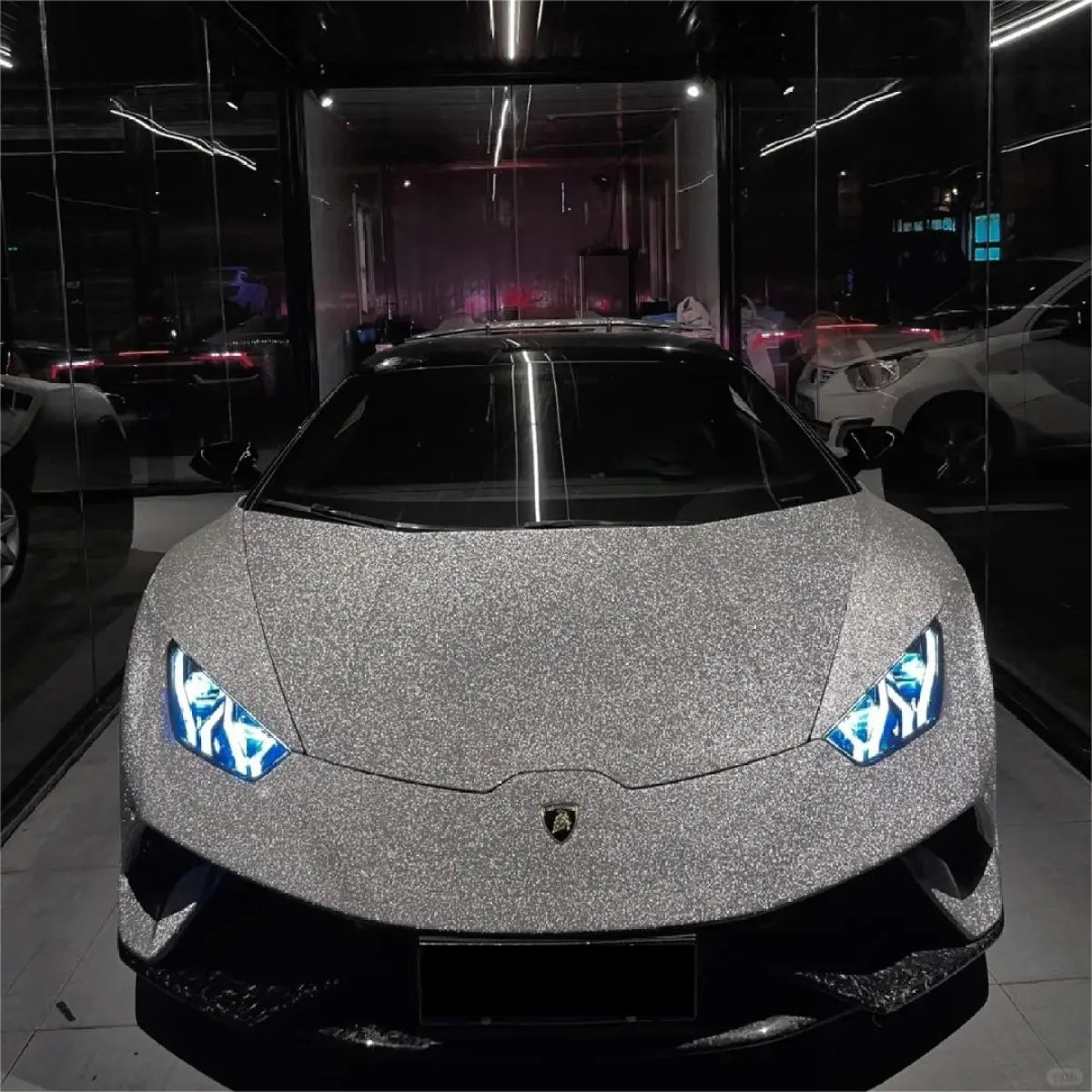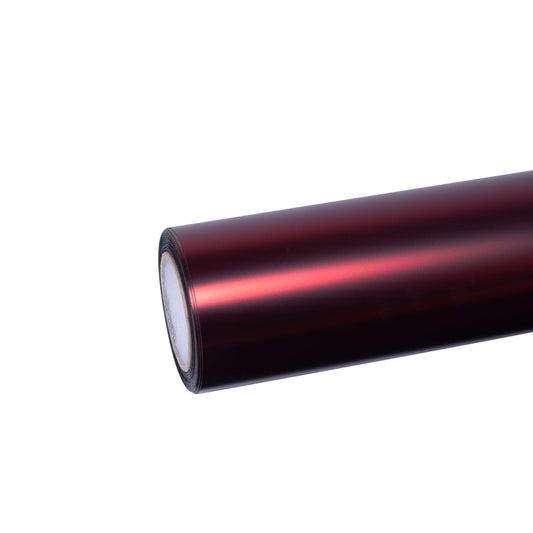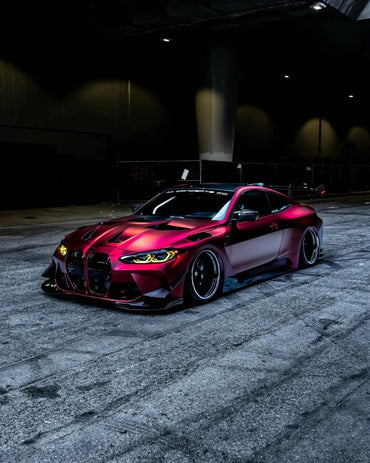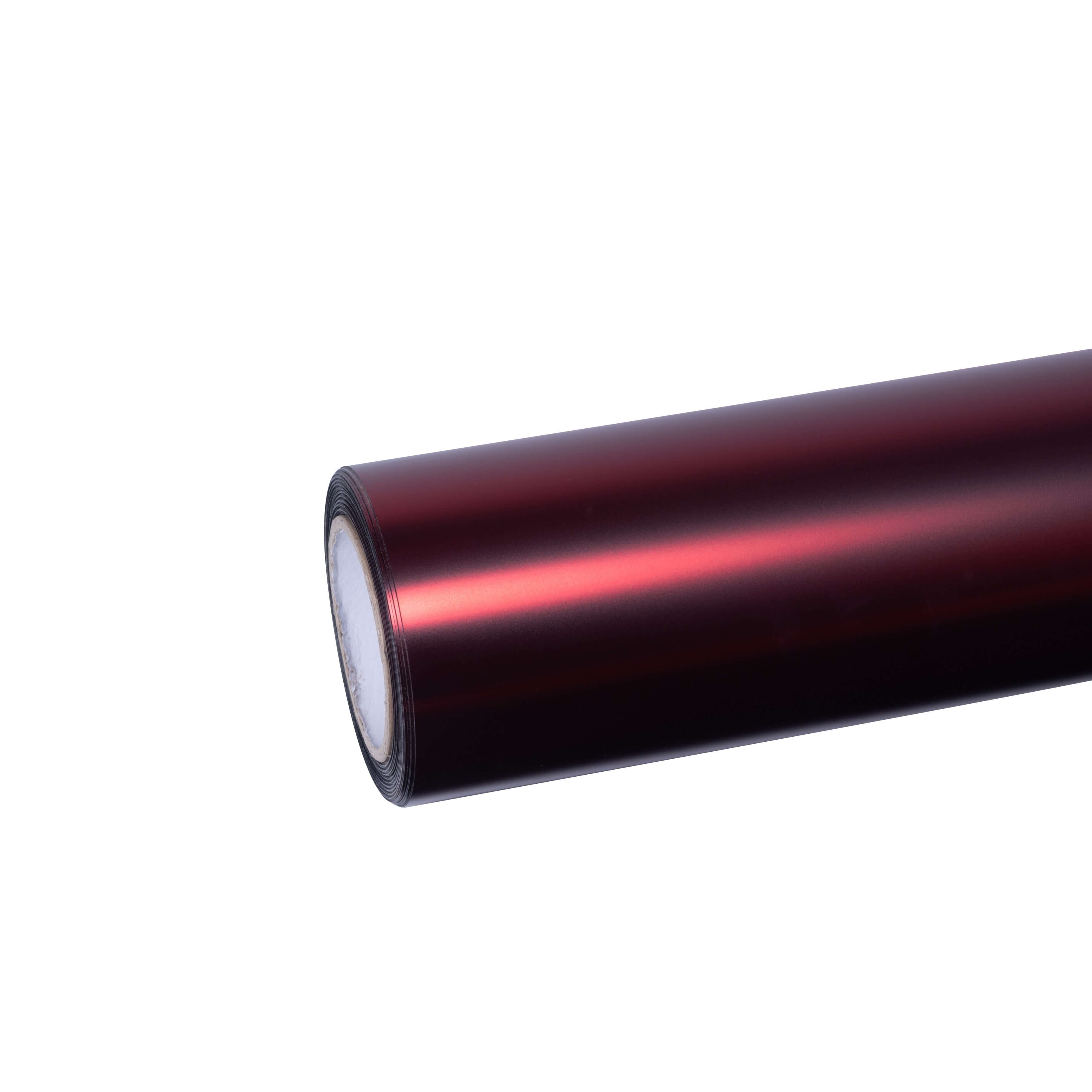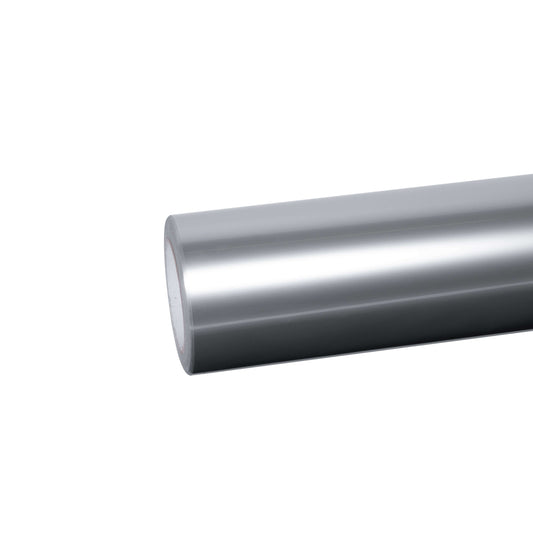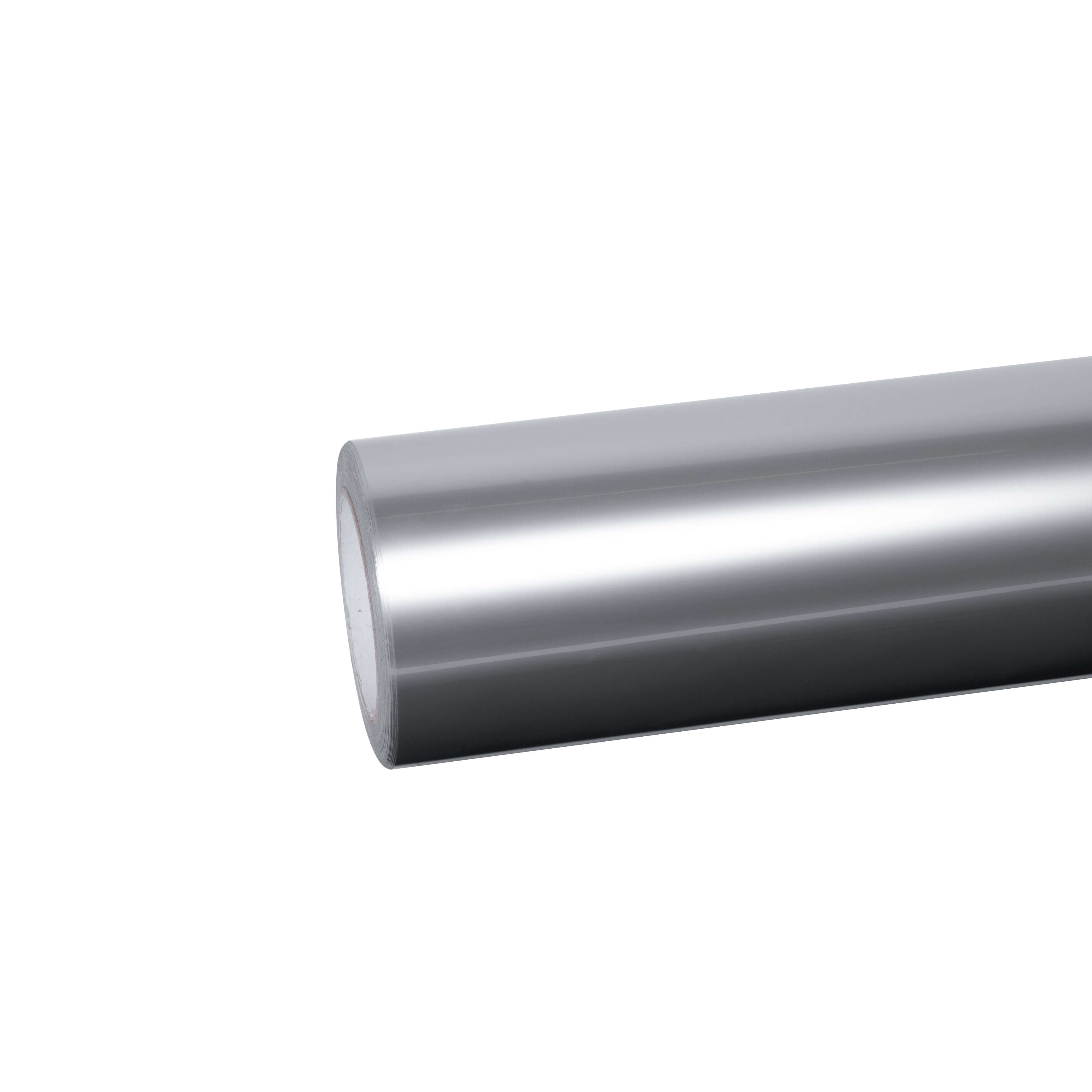Understanding UV Radiation and Automotive Paint Damage
Ultraviolet radiation represents one of three primary wavelength categories in sunlight, alongside visible light and infrared. While invisible to human eyes, UV rays carry tremendous energy that triggers destructive chemical reactions when absorbed by organic materials—including the polymers comprising automotive paint systems.
The Molecular Breakdown Process
Modern automotive finishes consist of multiple layers working together: primer providing adhesion and corrosion protection, basecoat delivering color, and clearcoat offering transparent protection with UV inhibitors. This clearcoat layer—typically measuring just 40-60 microns thick, roughly equivalent to a Post-it note—serves as your vehicle's primary defense against environmental damage.
UV photons striking clearcoat surfaces transfer energy to polymer molecules, breaking chemical bonds in a process called photodegradation. According to research on UV exposure effects, this molecular disruption creates free radicals that accelerate oxidation—the chemical reaction between oxygen and paint polymers that causes visible deterioration.
The degradation cycle perpetuates itself. As UV radiation damages the clearcoat's molecular structure, it becomes increasingly porous and brittle. These microscopic cracks allow deeper UV penetration while admitting moisture, oxygen, and environmental contaminants that accelerate further breakdown. What begins as subtle gloss reduction eventually manifests as obvious fading, chalking, and complete clearcoat failure requiring professional restoration.
Color-Specific Vulnerability Patterns
Not all automotive colors experience identical UV damage rates. Paint pigment chemistry significantly influences UV susceptibility:
High-Risk Colors: Red and bright blue vehicles face accelerated fading because their organic pigments absorb UV energy readily. Red pigments—particularly those containing iron oxide compounds—degrade faster than most alternatives. Blue pigments similarly show pronounced vulnerability, often fading to lighter shades within 2-3 years of continuous outdoor exposure.
Moderate-Risk Colors: Black and dark-colored finishes demonstrate different UV damage patterns. While their pigments resist fading somewhat better than reds and blues, darker colors absorb more heat from sunlight. This thermal absorption accelerates chemical reactions in the clearcoat and basecoat layers, leading to accelerated oxidation that appears as chalky white patches across horizontal surfaces.
Lower-Risk Colors: White, silver, and light metallic finishes naturally reflect more UV radiation, reducing photon absorption and slowing degradation. However, even these colors experience clearcoat breakdown—it simply manifests less obviously because the underlying color doesn't show dramatic fading.
Sailifilm's colored paint protection film collection addresses color vulnerability by providing UV-resistant topcoats regardless of the shade selected, ensuring consistent protection across the entire color spectrum.
Geographic and Environmental UV Exposure Factors
UV damage severity varies dramatically based on geographic location, seasonal patterns, and specific environmental conditions. Understanding these factors helps determine appropriate protection strategies:
Regional Intensity Variations
Equatorial regions experience approximately 30-40% more UV radiation annually compared to temperate zones. States like Arizona, Florida, Texas, and Southern California subject vehicles to intense year-round UV exposure that accelerates paint degradation significantly. In these high-UV environments, unprotected vehicle paint may show visible oxidation within 18-24 months.
Higher elevations intensify UV exposure—radiation increases approximately 10-12% per 1,000 meters of altitude. Mountain communities in Colorado, Utah, and Wyoming experience UV levels comparable to equatorial sea-level locations, despite cooler temperatures that might suggest reduced damage risk.
Coastal environments add salt spray and increased humidity to UV exposure, creating particularly aggressive conditions. Salt accelerates corrosion while moisture promotes oxidation reactions, compounding UV damage effects through multiple simultaneous attack vectors.
Seasonal UV Variation
UV intensity peaks during summer months when sun angle approaches perpendicular to Earth's surface. However, winter UV exposure—particularly in high-altitude or southern regions—remains substantial enough to cause cumulative damage. Snow-covered landscapes reflect up to 80% of UV radiation back toward vehicles, effectively doubling exposure in winter parking situations.
Horizontal vehicle surfaces—hoods, roofs, and trunks—receive maximum UV exposure because these panels face directly skyward during peak radiation hours. Vertical surfaces like doors and fenders experience roughly 40-60% less UV exposure, explaining why fading often appears most pronounced on horizontal panels.
Parking and Storage Patterns
Garage-stored vehicles experience minimal UV exposure, potentially extending unprotected paint life by 5-10 years compared to outdoor-parked alternatives. However, most vehicle owners lack consistent covered parking access, making alternative protection essential.
Carport storage provides partial protection by blocking direct overhead sunlight but doesn't eliminate reflected UV from surrounding surfaces. Tree shade offers limited protection—while blocking direct radiation, tree canopies allow diffuse UV penetration while introducing additional hazards from sap, pollen, and bird droppings.
Professional-grade solutions like Sailifilm's TPU paint protection wrap deliver UV defense equivalent to permanent garage storage, protecting vehicles regardless of parking conditions.
The Economic Impact of UV Paint Damage
UV-induced paint deterioration carries significant financial consequences affecting both immediate maintenance costs and long-term vehicle value:
Restoration vs Prevention Cost Analysis
Professional paint correction addressing moderate oxidation typically costs $500-1,500 depending on vehicle size and damage severity. This process removes several microns of clearcoat through mechanical polishing, diminishing the protective layer and increasing future degradation rates.
Severe oxidation requiring complete panel repainting costs $2,000-5,000 for partial coverage or $8,000-15,000 for full-vehicle restoration. These expenses far exceed preventive protection investments while requiring vehicle downtime and risking color-matching inconsistencies.
Premium paint protection film installations range $2,500-6,000 for full-vehicle coverage—a one-time investment providing 7-10 years of comprehensive UV defense. The protection-to-restoration cost ratio demonstrates clear economic advantages for preventive approaches.
Resale Value Preservation
Vehicle paint condition directly influences resale valuations. Industry studies indicate paint-related issues reduce resale prices by 10-20% for mainstream vehicles and 15-30% for luxury and performance models where appearance expectations run higher.
Buyers perceive faded paint as evidence of poor maintenance and potential mechanical neglect. Even mechanically sound vehicles with visible UV damage face significant negotiation disadvantages and extended selling periods. Paint issues also trigger concerns about underlying rust and corrosion, further depressing values.
Protected vehicles maintaining factory-fresh paint command premium prices. Documented protection film installations serve as selling points, demonstrating owner commitment to preservation and providing transferable value to subsequent owners concerned about ongoing protection.
Our best sellers collection includes protection solutions proven to maintain resale value through thousands of documented installations.
How Paint Protection Film Blocks UV Radiation
Modern TPU paint protection films incorporate sophisticated UV-blocking technology operating through multiple mechanisms:
UV Absorber Chemistry
Premium thermoplastic polyurethane formulations integrate specialized UV absorber molecules—primarily benzotriazole and benzophenone compounds—distributed throughout the film matrix. These molecules intercept UV photons before they reach underlying paint, converting destructive radiation into harmless heat dissipated across the film surface.
The absorber concentration gradient ensures maximum UV protection where needed most. During film curing, benzotriazole molecules naturally migrate toward surface layers, creating enhanced protection in the top 7-15 microns where UV radiation first encounters the material. This self-stratifying property optimizes UV defense without requiring additional manufacturing steps.
Sailifilm's TPU films maintain UV absorber effectiveness throughout their 7-10 year service life. Unlike wax or sealant applications that degrade within months, the UV absorbers remain chemically bonded within the polyurethane matrix, providing consistent protection that doesn't require reapplication.
Optical Clarity Maintenance
Early-generation paint protection films suffered yellowing problems—UV exposure caused optical degradation that transformed clear films into unsightly amber-tinted overlays. This yellowing resulted from UV radiation breaking down aliphatic polyurethane chains, creating color-tinted degradation products.
Modern formulations utilize advanced aliphatic TPU chemistry with enhanced UV stability. These materials resist yellowing even after prolonged exposure to intense sunlight. Accelerated weathering tests simulating 10+ years of outdoor exposure demonstrate less than 2% yellowing across Sailifilm's premium TPU product line.
Optical clarity preservation ensures protected paint maintains its original appearance indefinitely. Our crystal vinyl wrap and clear TPU options deliver invisible protection—observers see factory paint, not protective film.
Self-Healing Technology Integration
UV protection combines synergistically with self-healing capabilities in premium TPU films. While UV absorbers prevent photodegradation, the thermoplastic polyurethane base layer repairs surface damage through heat-activated molecular reorganization.
Minor scratches and swirl marks—damage that would permanently mar unprotected paint—disappear when TPU films reach 140-160°F through sunlight exposure or hot water application. The material's viscoelastic properties allow polymer chains to flow back into original positions, erasing damage while maintaining UV protection throughout the healing process.
This dual-protection approach addresses both UV-induced chemical degradation and mechanical damage from road debris, creating comprehensive defense systems impossible with traditional protective methods.
Comparing UV Protection Methods
Multiple approaches exist for defending automotive paint against UV radiation. Understanding their relative effectiveness helps identify optimal solutions:
Traditional Wax Applications
Carnauba wax and synthetic polymer waxes provide minimal UV protection—typically blocking 15-25% of radiation while offering virtually no physical protection against scratches or impact damage. Wax durability ranges 4-12 weeks depending on environmental exposure, requiring frequent reapplication.
Wax works by creating thin sacrificial layers atop clearcoat surfaces. UV radiation degrades these layers rather than attacking paint directly. However, the protection remains minimal and temporary, offering marginal benefits for the ongoing maintenance effort required.
Cost-effectiveness calculations reveal wax applications costing $50-150 each, repeated 4-12 times annually, accumulate to $200-1,800 yearly expenditures with limited protective results.
Paint Sealants
Synthetic paint sealants utilize polymer chemistry providing longer durability than traditional wax—typically 3-6 months per application. UV protection improves modestly to 25-35% radiation blocking, though physical protection remains minimal.
Sealant benefits include easier application and more durable bonding to paint surfaces. However, they still require multiple annual applications while offering incomplete UV defense. Professional sealant applications cost $200-400 annually for consistent protection.
Ceramic Coatings
Liquid ceramic coatings represent significant advancement in paint protection technology. SiO2-based formulations bond chemically to clearcoat surfaces, creating hard, hydrophobic layers that provide 50-70% UV protection lasting 2-5 years.
Ceramic coatings excel at preventing contaminant bonding and simplifying maintenance. Their chemical resistance and hydrophobic properties make them valuable supplementary protection, particularly for vehicles already protected by paint protection film.
However, ceramic coatings provide minimal impact protection. They prevent scratches and swirls better than wax but cannot absorb rock chip impacts or road debris damage. Their UV protection—while substantial—falls short of film-based solutions.
Professional ceramic coating applications cost $800-2,500 depending on quality and coverage area.
Premium TPU Paint Protection Film
Thermoplastic polyurethane films represent ultimate UV protection technology, blocking 98-99% of harmful radiation while simultaneously defending against physical damage. The 6.5-9.5 millimeter material thickness absorbs impact energy that would chip or scratch unprotected paint.
TPU films combine UV protection with self-healing technology, hydrophobic topcoats, stain resistance, and optical clarity maintenance. This comprehensive protection addresses all major paint damage vectors through single installations lasting 7-10 years.
Initial investment costs run higher—$2,500-6,000 for professional full-vehicle coverage—but protection comprehensiveness and longevity deliver superior long-term value compared to alternatives requiring ongoing reapplication.
Sailifilm's ultra-matte wrap and metallic vinyl wrap collections demonstrate how advanced protection integrates seamlessly with aesthetic customization, delivering both preservation and personalization simultaneously.
Specialty Finish UV Protection Considerations
Different wrap finishes require tailored UV protection approaches:
Matte and Satin Finishes
Matte finishes pose unique UV protection challenges. Traditional gloss-optimized coatings can alter matte appearance, creating unwanted sheen that defeats the aesthetic purpose. Premium matte-specific formulations maintain flat finish characteristics while delivering complete UV protection.
Sailifilm's ultra-matte wrap collection features hydrophobic topcoats engineered specifically for satin finishes, preventing glossy patches while blocking UV radiation. This specialized chemistry ensures matte vehicles maintain their distinctive appearance indefinitely.
Metallic and Chrome Effects
Metallic finishes contain aluminum flake pigments creating dimensional depth and light-play effects. UV exposure oxidizes these metal particles, dulling their reflective properties and diminishing the finish's signature sparkle.
Our metallic vinyl wrap and liquid chrome wrap options integrate UV protection directly into metallic layers, preventing pigment oxidation while preserving optical brilliance. The protective topcoats enhance rather than diminish metallic effects, maintaining show-quality appearance through years of exposure.
Color-Shift and Specialty Films
Advanced specialty finishes like our rainbow laser vinyl wrap and dual color dream vinyl wrap incorporate complex optical layers creating dynamic color-changing effects. UV exposure threatens these delicate optical structures, potentially degrading the color-shift effects that make these finishes distinctive.
Premium specialty films integrate UV stabilizers throughout all optical layers, ensuring color-shift properties remain stable indefinitely. This comprehensive UV protection approach maintains the dramatic visual effects that justify specialty finish investments.
Carbon Fiber Patterns
Authentic carbon fiber and simulated patterns like our 3D carbon fiber wrap require UV protection preserving the dimensional weave texture and depth perception. UV degradation can flatten three-dimensional appearance, making textured patterns look increasingly two-dimensional over time.
Advanced UV-resistant topcoats maintain the depth and texture that distinguish premium carbon fiber wraps from basic alternatives, ensuring the material retains its high-tech appearance throughout its service life.
Installation Best Practices for Maximum UV Protection
Professional installation quality directly impacts UV protection effectiveness:
Surface Preparation Requirements
UV protection begins with proper surface preparation. Existing paint must be thoroughly cleaned, decontaminated, and corrected before film application. Any surface irregularities—oxidation, scratches, contaminants—reduce film adhesion and create weak points where UV radiation can potentially reach underlying paint.
Professional installers perform multi-stage preparation: mechanical washing removes surface dirt, clay bar treatment eliminates bonded contaminants, and chemical decontamination addresses embedded iron particles. Paint correction removes existing oxidation and damage, creating optimal surfaces for film bonding.
This preparation investment ensures maximum film-to-paint contact, eliminating air pockets and adhesive voids where UV radiation might penetrate protective barriers.
Film Selection for UV Exposure Patterns
Different vehicle areas experience varying UV exposure levels. Horizontal surfaces require maximum protection—typically 8.5-9.5 millimeter TPU films with highest UV absorber concentrations. Vertical surfaces can utilize slightly thinner alternatives while maintaining adequate protection.
Strategic coverage planning balances comprehensive protection with budget considerations. High-impact areas like hoods, fenders, and bumpers receive premium TPU film, while lower-risk areas might utilize vinyl wraps with UV-resistant coatings for aesthetic purposes.
Sailifilm's sample kits allow hands-on evaluation of different materials and finishes before committing to full installations, ensuring optimal film selection for specific requirements.
Edge Sealing and Coverage Continuity
Proper edge techniques prevent UV exposure gaps. Professional installations tuck films into panel gaps and around trim pieces rather than cutting mid-panel, ensuring complete coverage without exposed edges where UV radiation could reach paint.
Edge sealants specifically formulated for automotive film applications create waterproof, UV-resistant barriers at film boundaries. These sealants bond to both film and paint, preventing moisture infiltration and UV penetration at critical junctions.
Coverage continuity extends protection across entire vehicle surfaces. Any unprotected areas remain vulnerable to UV damage, potentially creating obvious color mismatches between protected and exposed sections over time.
Maintenance Practices Preserving UV Protection
Proper care maximizes protection film longevity and UV-blocking effectiveness:
Cleaning Without Degrading Protection
Gentle washing techniques prevent premature coating wear. The two-bucket method with pH-neutral car shampoo removes contaminants without stripping hydrophobic topcoats or damaging UV-resistant layers. Avoid harsh detergents, abrasive compounds, and automatic car washes with aggressive brushes that accelerate coating degradation.
Microfiber wash mitts and drying towels minimize mechanical abrasion. Their soft synthetic fibers lift dirt without creating micro-scratches that accumulate over repeated wash cycles.
Washing frequency balances cleanliness with coating preservation. Every 2-3 weeks typically maintains appearance without excessive coating stress. More frequent washing becomes necessary in harsh environments with heavy contamination exposure.
Contamination Response Protocols
Immediate removal of environmental contaminants prevents coating damage. Bird droppings contain uric acid with pH levels as low as 3.5—capable of etching through protective coatings within 24-48 hours. Tree sap cures in sunlight, hardening into varnish-like substances that bond aggressively to film surfaces.
Keep quick-detailer spray and microfiber cloths accessible for spot cleaning. Gentle wiping removes fresh contaminants before chemical reactions damage protective layers.
For stubborn contaminants, isopropyl alcohol solutions (50% alcohol, 50% distilled water) dissolve most organic residues without attacking TPU or vinyl materials. Apply solution, allow 30-60 seconds contact time, then gently wipe clean.
Periodic Protection Enhancement
Ceramic spray sealants designed for vinyl and TPU applications can refresh hydrophobic properties every 90 days, supplementing built-in UV protection. These products bond to existing coatings, adding temporary enhanced protection between more comprehensive treatments.
Application requires clean, dry surfaces worked in shaded areas. Apply thin, even coats across panel sections, buffing immediately with clean microfiber towels to prevent streaking.
Professional ceramic coating applications every 2-3 years provide additional UV protection layers complementing film-based defense systems. This layered approach maximizes protection while simplifying routine maintenance.
Real-World UV Protection Performance
Understanding laboratory specifications matters less than recognizing how UV protection performs during actual vehicle operation:
Hot Climate Performance
Vehicles operated in high-UV regions like Arizona, Florida, and Southern California demonstrate premium TPU film capabilities. Installations show minimal color fading or coating degradation after 5+ years of intense year-round exposure—conditions that would destroy unprotected paint within 2-3 years.
Side-by-side comparisons of protected versus unprotected panels on the same vehicle dramatically illustrate UV protection effectiveness. Protected areas maintain factory-fresh appearance while adjacent unprotected sections show obvious fading, oxidation, and clearcoat deterioration.
High-Altitude UV Resistance
Mountain environments testing UV protection through intense radiation and temperature extremes demonstrate TPU film durability. Colorado installations above 7,000 feet elevation maintain optical clarity and color accuracy despite UV exposure exceeding sea-level intensities by 20-30%.
The self-healing properties prove particularly valuable in alpine environments. Rock chips and abrasion from winter chain use repair through heat activation, maintaining protective continuity despite aggressive mechanical challenges.
Coastal Environment Protection
Salt spray, high humidity, and intense UV exposure combine to create particularly aggressive coastal conditions. Premium TPU films prevent salt-accelerated corrosion while blocking UV radiation, addressing multiple simultaneous attack vectors.
Long-term coastal installations demonstrate the importance of comprehensive protection. Sailifilm films maintained on beachfront vehicles show no salt-induced degradation, UV yellowing, or adhesive failure after 7+ years—performance impossible with traditional protective methods.
Performance Vehicle Applications
Track-day enthusiasts and racing applications expose vehicles to extreme UV conditions during outdoor storage between events. High temperatures from performance operation combine with UV exposure, creating accelerated aging conditions.
Racing teams report maintained appearance through multiple competition seasons on vehicles protected with our colored PPF options. The protection allows aggressive track use without appearance compromises, preserving both competitive aesthetics and resale value.
Advanced UV Protection Technologies
Ongoing materials science research continues improving UV protection capabilities:
Nanoparticle UV Absorbers
Next-generation formulations incorporate titanium dioxide and zinc oxide nanoparticles—compounds familiar from sunscreen applications. These microscopic particles scatter and absorb UV radiation across broader wavelength ranges than traditional organic absorbers.
Nanoparticle integration allows thinner films maintaining equivalent UV protection, reducing material costs while improving conformability around complex vehicle curves. The inorganic nature of these absorbers provides enhanced long-term stability resistant to photo-degradation.
Self-Regenerating Protective Layers
Research explores coatings with self-regenerating capabilities. These experimental formulations contain reservoir layers that slowly release fresh UV absorbers to surface positions, compensating for gradual degradation over time.
While not yet commercially available, self-regenerating technology promises extended protection lifespans potentially exceeding 15-20 years—approaching vehicle operational lifetimes and eliminating replacement requirements.
Smart Responsive Films
Experimental thermochromic and photochromic technologies adapt UV protection based on environmental conditions. Films could theoretically increase UV-blocking during peak radiation periods while becoming more transparent during lower-exposure conditions.
These smart materials remain in development but demonstrate the industry's commitment to advancing protective capabilities beyond current state-of-the-art solutions.
Economic and Environmental Sustainability
UV protection delivers benefits extending beyond individual vehicle preservation:
Resource Conservation Through Paint Preservation
Automotive painting represents one of the most environmentally intensive manufacturing processes. VOC emissions, hazardous waste generation, and energy consumption associated with repainting significantly impact environmental footprints.
Paint protection preventing premature refinishing reduces these environmental costs. A single full-vehicle repaint generates approximately 100-150 pounds of VOC emissions and hazardous waste—impacts eliminated through effective UV protection maintaining original finishes.
Industry-wide adoption of premium protective films could prevent millions of tons of environmental emissions annually while conserving resources otherwise consumed by repair and refinishing operations.
Extended Vehicle Lifecycles
Appearance preservation encourages longer vehicle ownership periods. Well-maintained vehicles with protected paint command higher resale values, making vehicle upgrades more affordable while reducing new vehicle production demand.
The automotive industry generates substantial environmental impact through raw material extraction, manufacturing energy consumption, and transportation emissions. Extended vehicle lifecycles directly reduce these impacts by spreading production costs across longer operational periods.
Sustainable Material Selection
Sailifilm's commitment to sustainable materials includes utilizing recyclable TPU formulations and minimizing manufacturing waste. Our production processes emphasize resource efficiency while maintaining quality standards ensuring maximum product longevity.
Choosing durable, long-lasting protection over frequently-replaced alternatives reduces material consumption and waste generation throughout vehicle ownership periods.
Selecting Optimal UV Protection for Your Vehicle
Several factors influence protection strategy selection:
Coverage Strategy Development
Full-vehicle coverage provides comprehensive UV protection maintaining uniform appearance indefinitely. This approach suits high-value vehicles, show cars, and situations where maximum resale value preservation justifies premium investment.
Strategic partial coverage focuses protection on high-UV-exposure areas—hoods, roofs, and trunk panels receiving maximum radiation. This approach balances protection effectiveness with budget constraints, delivering substantial benefits at reduced costs.
Our wrapping tools collection supports both professional installers and DIY enthusiasts tackling coverage projects, providing equipment necessary for quality installations.
Aesthetic Integration Opportunities
UV protection doesn't require sacrificing customization opportunities. Colored PPF options deliver complete UV defense while transforming vehicle appearance through vibrant finishes spanning our collections from glitter sparkle car wrap to subtle color enhancement.
This dual-benefit approach maximizes value—single installations addressing both protective and aesthetic objectives eliminate separate customization expenses while ensuring cohesive appearance.
Professional Installation Value
While DIY installations appeal to budget-conscious enthusiasts, professional installation quality directly impacts protection effectiveness and longevity. Certified installers possess experience handling diverse vehicle geometries, specialized equipment enabling precise application, and warranty backing guaranteeing quality results.
Professional installation costs typically represent 40-60% of total project expenses but ensure optimal outcomes that DIY applications frequently cannot match. The value proposition becomes particularly compelling for full-vehicle coverage where installation errors risk expensive material waste.
Conclusion: Investing in Long-Term Vehicle Preservation
UV radiation represents an invisible but relentless threat to automotive finishes. Every hour of sunlight exposure initiates chemical reactions degrading protective clearcoats and fading vibrant colors. Understanding UV damage mechanisms empowers informed protection decisions that preserve vehicle appearance and value for years beyond typical expectations.
Modern paint protection film technology has evolved far beyond early-generation products. Today's premium TPU films—particularly Sailifilm's advanced formulations—block 98-99% of UV radiation while simultaneously defending against physical damage through self-healing technology and impact resistance. These comprehensive protection systems address all major paint damage vectors through single installations lasting 7-10 years.
The economic case for quality protection proves compelling. Protection film investments of $2,500-6,000 prevent paint damage that would require $8,000-15,000 restoration expenses while preserving resale values by 10-30% of vehicle worth. This protection-to-restoration cost ratio, combined with maintenance convenience and aesthetic preservation benefits, establishes clear advantages for proactive approaches.
Whether protecting daily drivers from commuting exposures, preserving show vehicles in collector condition, or maintaining performance cars through aggressive track use, advanced UV-resistant paint protection films deliver unmatched value. The combination of chemical UV defense, physical impact protection, self-healing capabilities, and aesthetic customization options creates solutions impossible with traditional protective methods.
Sailifilm's comprehensive collections—spanning clear TPU films, colored PPF options, specialty finishes, and complete vinyl wrap alternatives—provide protection solutions matching any requirement or preference. Every product incorporates advanced UV-blocking technology proven through years of real-world testing across diverse climates and applications.
The choice confronting vehicle owners remains straightforward: accept inevitable UV-induced paint degradation requiring expensive restoration, or invest proactively in advanced protection maintaining factory-fresh appearance indefinitely. For those valuing their automotive investments and appreciating pristine vehicle presentation, quality paint protection film represents not optional luxury but essential preservation strategy.
Protect your vehicle with confidence. Explore Sailifilm's complete wrap and protection collections featuring industry-leading UV resistance technology engineered for maximum longevity and performance. Transform your vehicle's appearance while ensuring comprehensive UV protection that maintains showroom condition through years of operation.
Frequently Asked Questions About UV Protection
How quickly does UV damage occur on unprotected paint?
Visible UV damage typically appears within 18-36 months of continuous outdoor exposure, though degradation begins immediately. High-UV regions accelerate damage—vehicles in Arizona or Florida may show fading within 12-18 months.
Can UV-damaged paint be restored?
Moderate oxidation responds to professional polishing and correction, though this removes protective clearcoat material. Severe damage with clearcoat failure requires complete repainting—prevention costs dramatically less than restoration.
Does paint protection film prevent all UV damage?
Premium TPU films block 98-99% of UV radiation, effectively eliminating photodegradation. The minimal UV penetration causes no visible damage over typical 7-10 year film lifespan, maintaining paint in original condition.
How does colored PPF compare to clear film for UV protection?
Both deliver identical UV protection—color additives don't compromise UV-blocking capabilities. Colored films provide aesthetic transformation alongside comprehensive protection, combining benefits in single installations.
What maintenance preserves UV protection effectiveness?
Gentle washing with pH-neutral shampoo every 2-3 weeks, immediate contamination removal, and periodic ceramic sealant applications maintain optimal UV-blocking performance throughout film lifespan.
